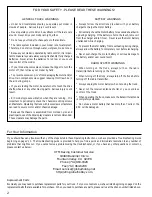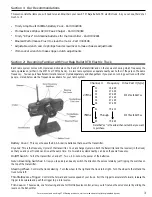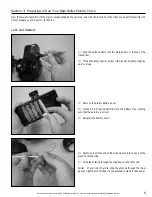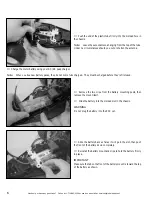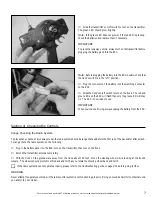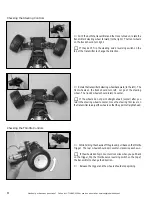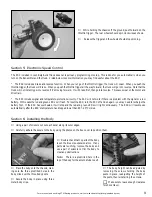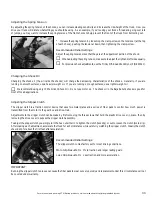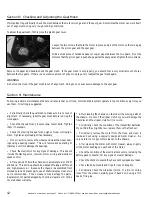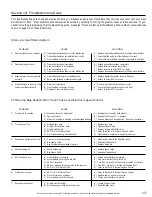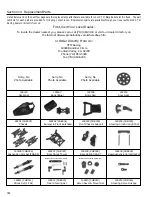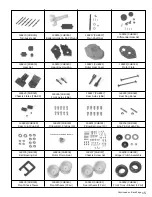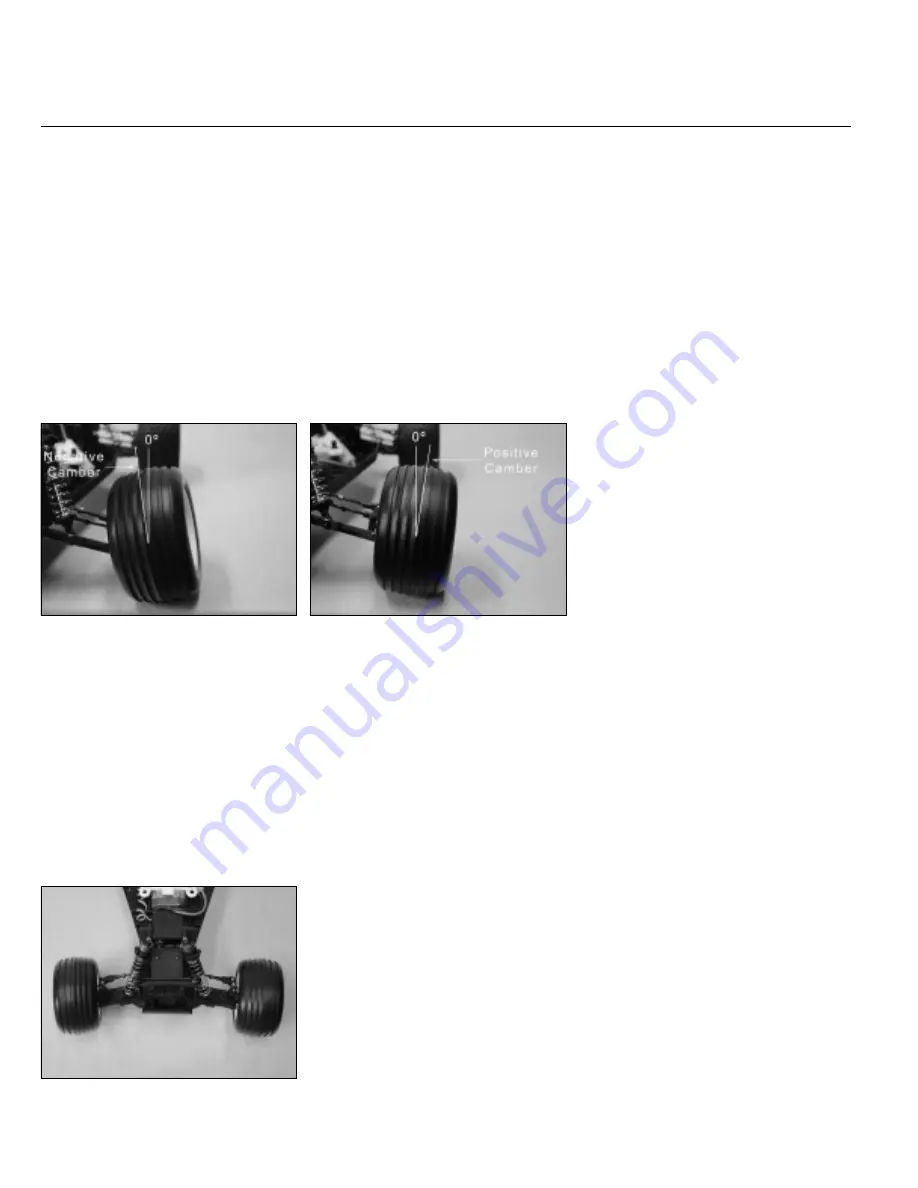
10
Need help or have any questions? Call us at 1-714-963-0329 or send us an email at service@globalhobby.net
Chassis alignment and geometry are important if you want your truck to perform well. A good performing truck means a truck that is
easier to drive, too. Follow our guidelines in this section to get the most out of your truck.
☞
It's very important when making changes to the settings of your truck that you make the settings the same for each side. For
example, if you change the camber angle on the right front tire, you must change the camber angle of the left front tire the same
amount. If you change the spring tension on the left front shock, you must change the spring tension on the right front shock the
same amount, and so on.
☞
Do not make any changes that are more than 3 degrees from the initial settings listed or the handling characteristics of your truck
will become very poor.
Adjusting the Camber
Camber changes the amount of the tire's surface that contacts the ground. Tires that are exactly perpendicular to ground have 0 degrees
of camber. If the tops of the tires lean toward each other, the tires have negative camber. If the tops of the tires lean out away from each
other, the tires have positive camber.
Recommended Initial Settings:
For driving on smooth surfaces set both the front and back wheels at 0 degrees.
For driving on rough surfaces set the front wheels at -1 degrees and the back wheels at -2 degrees.
☞
Camber settings should be measured with the truck at its normal ride height.
☞
For more precise camber adjustments, use the R.P.M. Precision Camber Gauge (P/N 708099).
Negative Camber
Positive Camber
☞
Adjust the camber by turning the upper
turnbuckles using an adjustable wrench.
(Camber angles exaggerated for photo clarity)
Section 7: Making Chassis Adjustments
Adjusting the Toe Angle
The toe angle is the angle of both front tires to each other - when viewed from above. Toe-in (both tires pointing toward each other) will
make your truck more stable and it will track straighter. Toe-out (both tires pointing away from each other) will make your truck turn
quicker, but it will be less stable.
Recommended Initial Settings:
1 - 2 degrees toe-in to add stability.
☞
Adding 3 degrees or more of toe-in will result in excessive loss of speed and difficulty
steering the truck. Adjust the toe-in by turning the tie-rods with an adjustable wrench.
☞
For more precise toe-in adjustments, use the R.P.M. Toe-in Gauge (P/N 708049).


